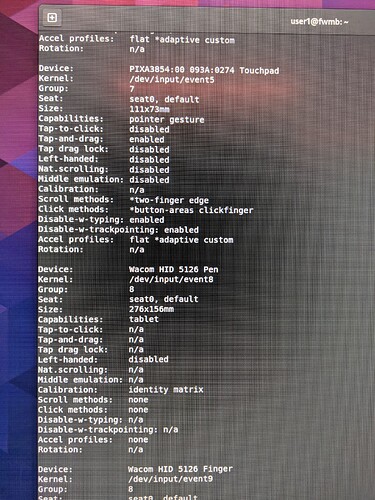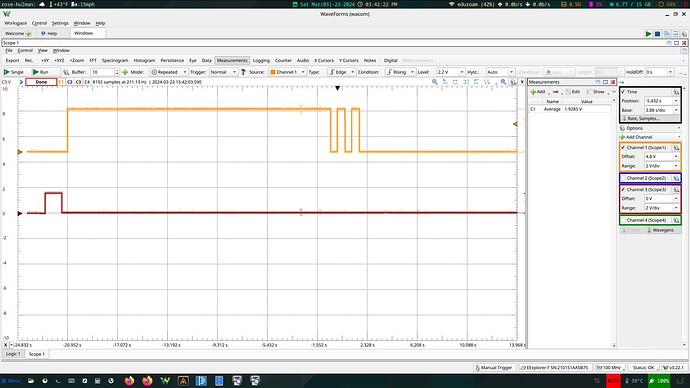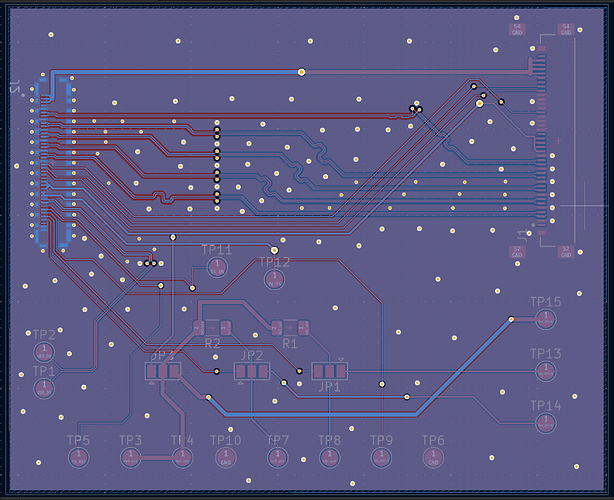Goal:
My long term goal is to build my own 2 in 1 laptop around the framework 13 motherboard. As a first step for that project, I need to get a touch screen with stylus support working through the framework’s eDP connector. A USB C display is not a good option as it will take up ¼ of the IO on the motherboard and would be more difficult to integrate into the final design.
Progress so far:
First, I tested to make sure a display from a Lenovo 2 in 1 (the 4k flex 5 15) would work with the framework 13 motherboard. I connected it using the normal framework 13 display cable and it booted and displayed correctly, including showing the correct resolution in software
With the display portion working, I then managed to reverse engineer the pinout for the Wacom touch screen controller (the same controller is used across a few computers, including the flex 5 and yoga 720)
The pins are connected to the motherboard as follows. The breadboard in the photo is a usb scope that I use for debugging.
3.3v → J302 (power jumper lower right of the motherboard)
gnd → ground (eDP connector)
reset → TS_RST_Q (eDP connector)
interrupt → TS_INT (eDP connector)
I2C sda →I2C_SDA_TP (trackpad test point)
I2C scl → I2C_SCL_TP (trackpad test point)
These connections were enough to get the touch screen controller to show up on the i2c bus in Linux, but the driver was not loaded so it was not usefull
In order to make it work I had to extract and decompile the ACPI tables on both the framework and my Lenovo yoga 720-15ikb. I then found the entry for the touch screen in the 720’s table and copped it into the decompiled framework’s table, making the necessary changes to the name of the I2C bus, setting the interrupt to the trackpad interrupt, and commenting out the trackpad. I then set grub to override the default ACPI table with my modified version
modifications made to the framework ACPI table
As long as trackpad interrupt is pulled low ether by connecting it to ground or by touching the trackpad during boot, the computer will communicate with the touch screen controller, load the driver, and work, at least on Linux. The screen I am using for testing is from a broken yoga 720-13ikb but, while its inverted because the replacement touch controller connected to it is from ebay and for slightly different machine, both the touch and stylus work corectly.
Next steps:
First of all, I need to get the TS_INT pin on the eDP connector working so that I can still use the trackpad. I have looked through the schematic, embedded firmware, and decompiled ACPI table but I have not found any indication of what GPIO pin it is connected to. Furthermore, the I2C and 3VS_TS lines on the eDP connector seem to be non-functional. They go to 3.3V for about 2 seconds when the motherboard is turning on and then drop back to 0V. The reset and interrupt pins do not show this behavior and stay at 3.3V. I have tried connecting the TS_EN pin to ground and to 3VS_TS to no effect. Looking in the embedded firmware i2c definitions I don’t see an I2C port defined for the touch screen, leading me to believe that the pins are unconfigured or intentionally configured to turn off. If its feasible, I would like to make the pins work so that I would not need to solder to the motherboard and trackpad in the finished project. Once I figure out the eDP pins I will make a breakout board for the edp connector so that I can connect the display and touch controller simultaneously.
If you have any questions feel free to ask. If you know what the GPIO pin for TS_INT is, have any ideas for where to look for that information, or any idea how to get the TS I2C and 3VS pins to stay on, let me know.













